TotalSim CFD Marine Modeling & Simulation Service
TotalSim’s Marine CFD Modeling & Simulation Services enable you to account for all aspects of a vessels' performance. Explore our Marine capabilities below.
CFD Marine Propulsion Simulation Services
CFD Marine Hydrodynamic Performance Modeling Services
CFD Aerodynamic Performance Consulting Services
CFD Experts Complete Solutions
Simulate at full scale in real conditions and Meet the International Maritime Organization (IMO) Guidelines
By modeling real operating conditions at full scale in CFD, you can understand the interaction between the hull and propulsion system in any sea condition. The complexity of models can range from simple still water tow tests to full multi-degree of freedom self-propelled runs in varying wave profiles.
Our CFD Marine Modeling & Simulation Service, coupled with our high performance computing, provide a robust process that allows you to replicate any scenario needed to study and improve your designs
Take advantage of our capabilities and let us help your company meet the International Maritime Organization guidelines. This specialized agency of the United Nations is the standard-setting authority for the safety, security and environmental performance of international shipping. They create a regulatory framework for the shipping industry that is fair, effective and universally implemented.
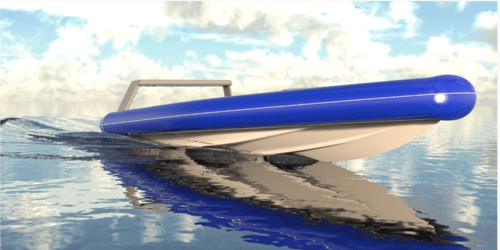
Benefits We Provide
Working with virtual modeling and simulation of fluid flows allows you to accelerate your design process using software such as Star-CCM+ or OpenFOAM. This reduces the number of physical prototypes and testing, while still evaluating all necessary conditions. Our engagement ranges from CFD consulting, to training, to customized workflows to meet your specific needs.
Whether you're testing marine design, marine applications, investigating the effects of flooded compartments, our personalized simulations and apps provide valuable insight. Working with TotalSim's CFD Marine Modeling & Simulation Service will put you years ahead of the competition, while lowering your costs and optimizing your designs. Let us help you reach your goals efficiently and accurately.
Learn About Our Marine Capabilities
Propulsion Systems
CFD Marine Propeller Simulation Service
Our workflow capabilities include many different ways to simulate rotating flows, to design the best way possible your new boat, ship or vessel propeller project.
Approaches that require the resolution of the detailed marine propeller blade geometry and simplified approaches which model the effect of rotating machinery on the surrounding flow field calculate the following:
- Open Water Characteristics
- Coefficients in Longitudinal Displacement
- Thrust
- Torque
- Self Propulsion Analysis
- Velocity at the Blades
- Axial and Tangential Forces
- Cavitation and Erosion

CFD Marine Gear Case Simulation Services
An optimally designed marine gearbox can result in energy savings, reduced environmental impact and increased and reliability. Along with other components of the gearcase, efficiency is also a major concern in the design of transmissions. The churning power losses associated with the motion of gears through the oil represent a significant portion of the total power losses in a transmission and therefore need to be estimated using our proprietary workflow in gear dynamics, which allows us to help you with the following:
- Verify the Distribution of Oil around the Gears
- Visualize Oil and Air Distribution as Gears Rotate
- Windage
- Churning
- Pocketing
- Transmission Efficiency
- Heat Transfer
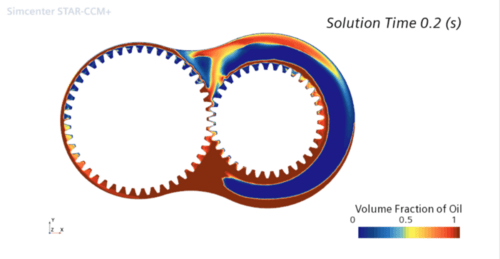
CFD Marine Crash Stop Simulation Service
Many different factors affect ship stopping distance calculation, from the vessel design to harsh ocean environmental conditions, affect the vessel safety properties for maneuvering performance. Totalsim's workflows for boat distance calculator, evaluate different scenarios considered in the design phase of a ship to cope with crash stop maneuvers to reduce the ship stopping distance.
Our workflow helps customers calculate the following:
- Resistance Coefficient
- Total Drag Force
- Ship Velocity Profile and Stopping/Reversing Time
- Determine Scale Effects from Model Scale Experimental Testing
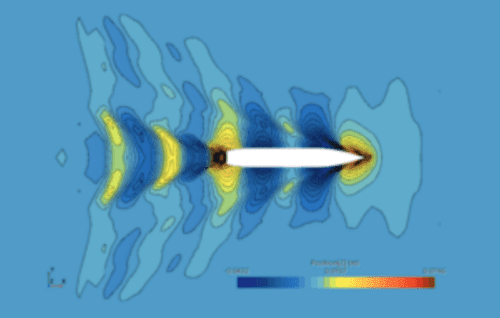
CFD Marine Bollard Pull Estimation Simulation Service
Our simulation for bollard pull consists of measuring the thrust forces generated by tugboats while taking into account the effect of waves and hull interference on the propeller performance to determine:
- Thrust Coefficient
- Advance Coefficient
- Hull Resistance
- Coefficient of Resistance
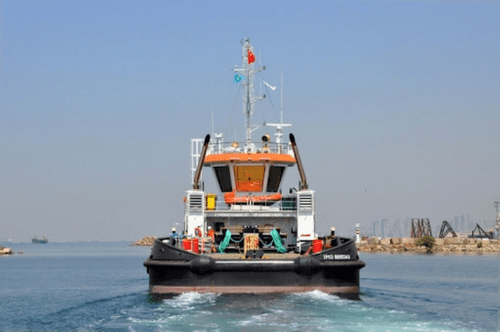
CFD Marine Cavitation & Erosion Simulation Service
Our propeller performance modeling workflow, evaluates the following capabilities:
- Erosion due to Cavitation
- Cavitation and Corrosion
- Bubble Formation and Growth
- Tip Vortex Cavitation
- Determine Scale Effects from Model Scale Experimental Testing
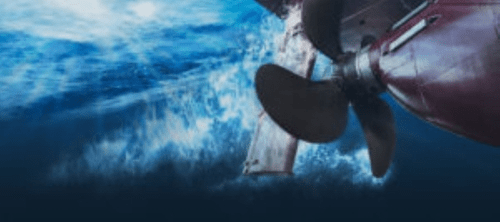
CFD Marine Stress Analysis on Boat Propeller Simulation Service
Our proprietary workflow for fluid-structure interaction simulations capture the deformation of the propeller under load, increasing the performance of the propeller, by calculating the following performance quantities:
- Loaded Performance
- Mechanical Stresses
- Propeller Shape
- Composite Boat Propellers
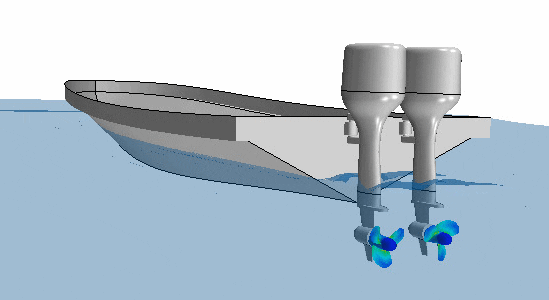
CFD Marine Intake Manifold Simulation Service
Our Intake Manifold workflow assists our customers in studying the thermal expansion of both exhaust and intake manifolds when exposed to hot gases entering the inlets. This simulation encompasses both conjugate heat transfer (CHT) between the solid components and the fluid, as well as the thermal expansion occurring in the solid materials due to temperature fluctuations. The analysis results take into account the interactions among all components involved in manifold studies, including intake manifolds and intake manifold gaskets, to enhance design strategies aimed at addressing the following issues:
- Engine Misfires
- Decrease in Power, Acceleration and Fuel Economy
- Coolant Leaking Onto the Ground While it is Stationary
- Regular or Quick Engine Overheating
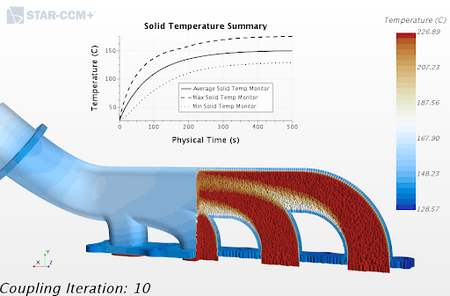
Hydrodynamic Performance
CFD Marine Tow Tank Resistance Consultant Service
Our simulation workflow for hull and rudder resistance consists of calculating different scenarios using Star CCM+ to replace experimental tow tanks. We use towing test specific models to understand the behavior of wave effects and drag forces, under wind and sea towing conditions.
Hull resistance workflow includes the following capabilities:
- Propagation of the Free Water Surface
- Wave Pattern
- Towing Ship Resistance Data
- Trim and Sinkage Data (Seakeeping)
- Equilibrium Forces and Moments
- Rudder Performance in Critical Maneuvers
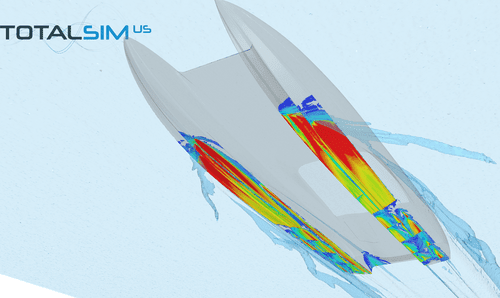
CFD Marine Propeller Open Water Consultant Services
Our workflow capabilities for underwater propeller design provide many possibilities to simulate rotating flows to measure propeller water efficiency.
The propeller performance data uses the wake field and velocity to calculate the following coefficients:
- Advance Ratio
- Thrust Coefficient
- Torque Coefficient
- Open Water Efficiency
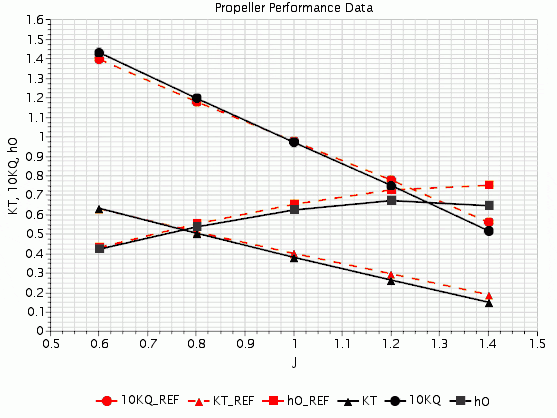
CFD Marine Maneuvering Prediction Consultant Service
In ship maneuvering many different factors, from the vessel design to harsh ocean conditions, affect the vessels' safety properties for maneuvering performance.
TotalSim's workflows enable different scenarios of a ship's operational envelope to be evaluated at the maneuvering ship handling design phase including:
- Simulate Full-Scale Performance
- Sink and Trim
- Free Running
- Maneuverability
- Equilibrium Positioning
- Rotating Arm Testing
- Planar Motion Testing

CFD Marine Noise and Vibration Reduction Consulting Service
Our modeling workflow include a full range of environmental marine services as a tool for solving complex marine environmental problems. Our customers can benefit from our workflow to solve the following types of problems:
- Ship noise and vibration
- Marine Sound Insulation
- Identify Noise Sources from various types of flow:
- Bluff body flows
- Turbulent Boundary Layer of Marine Components Flow
- Free Jet Flow and Jet Impingement
- Structural vibration that is induced by fluid flow
- Perform Spectral Analysis
- Determine Far-Field Noise Propagation
Our proprietary workflow allows us to help companies like https://www.boem.gov/center-marine-acoustics , to understand the science of marine acoustics by providing simulation capabilities in marine problems to improve ocean environment.
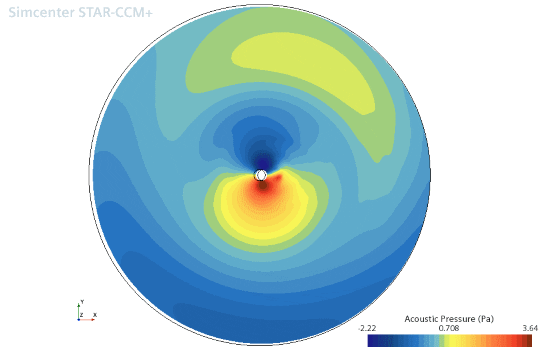
Marine Aerodynamic Performance
CFD Marine Aerodynamic Performance Modeling Service
Our simulation workflow for hull and superstructure drag can be used to replace or augment wind tunnel testing, and boat speed calculators. We use a range of physics models to understand the behavior of planing hull, wind and motion on the airflow around the vessel including:
- Lift and Drag Forces
- Noise Sources
- Wind Loading
- Intake Positioning
- Exhaust Positioning and Plume Tracking
- HVAC
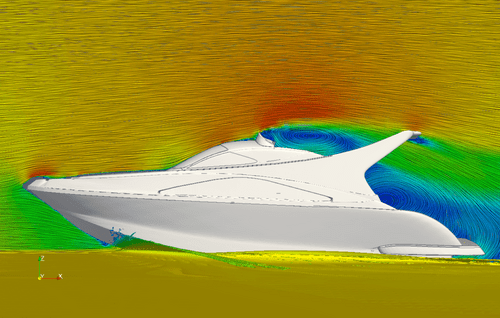
CFD Marine Cruise & Cargo Emissions Modeling Services
Gas dispersion modeling has become very popular in several industries including power, energy, marine, oil & gas etc. Our proprietary workflow investigates cruise ship emissions dispersion and concentration levels of harmful gases, toxins and in general monitor the air quality around such environments in an effort to reduce cruise and cargo carbon footprint. The following engineering quantities can be investigated:
- Include a Mixture of Gas Components Material Properties
- Tracking Gas Component Dispersion Monitor
- Tracking Gas Component Concentration Monitor
- Multiple Gas Exhaust Outlets Monitor
- Temperature and Odor Distribution Over Comfort Areas
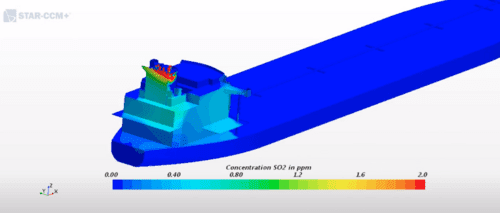
CFD Marine Helideck Safety Modeling Service
Our proprietary workflow for Helideck Design, allows to predict safety during impact of weather on helicopter operations including:
- Predict Temperature Increase of 2 ºC Above Ambient
within the Operational Helideck Zone as per CAP 437 - Minimize Exhaust Fumes in Offshore Platforms Around the Helideck Zone
- Availability of Deck Under Extreme Weather Conditions
- Helideck Offshore & Onshore
- Supports Helipad Construction Specifications
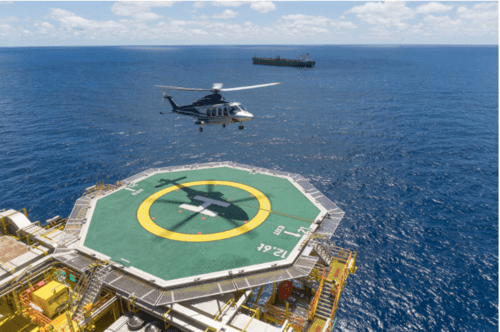
CFD Marine Passenger Comfort Modeling Service
Our ship solutions workflow for Passenger Thermal Management has been designed for the marine industry to optimize cruise and cargo cabins areas for increased passenger safety and comfort:
- Passenger Metabolic Rate, Body Size and Clothing Resistance
- Humidity
- Natural Ventilation and Vessel Motion
- HVAC
- Solar Loading
- Optimized Thermal Comfort for Passengers Cabins in Cruise and Cargo Ships
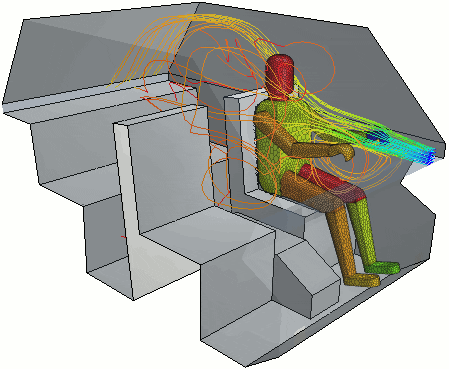
CFD Marine Acoustics Modeling Service
Our modeling workflow for underwater noise, include a full range of environmental marine services as a tool for solving complex marine and ocean noise environmental problems. Our workflow aims to reduce marine noise pollution by solving the following types of problems:
- Ship noise and vibration
- Marine Sound Insulation
- Identify Noise Sources from various types of flow:
- Bluff body flows
- Turbulent Boundary Layer of Marine Components Flow
- Free Jet Flow and Jet Impingement
- Structural vibration that is induced by fluid flow
- Perform Spectral Analysis
- Determine Far-Field Noise Propagation
Our proprietary workflow allows us to help companies, such as the Bureau of Ocean Energy Management , to understand the science of marine acoustics by providing simulation capabilities in marine problems to improve ocean environment.
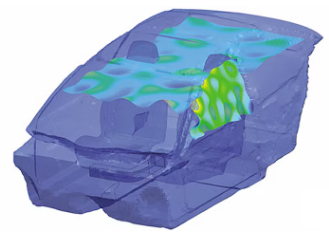
Complete Solutions
CFD Marine Self Propulsion Modeling Service
Our proprietary workflow has been designed to predict performance in boat propellers design. Our workflow can be used as a thrust to weight ratio calculator to predict boat speed and displacement
- Predict the Speed with Which a Ship Hull Moves Through Water in Response to the Thrust Supplied by a Spinning Propeller
- Calculate Propeller Effects on Performance of the Hull Due to the Swirl and Pressure Gradients
- Calculate Final Speed Power
- Rudder Sizing
- Open Water Characteristics
- Stability
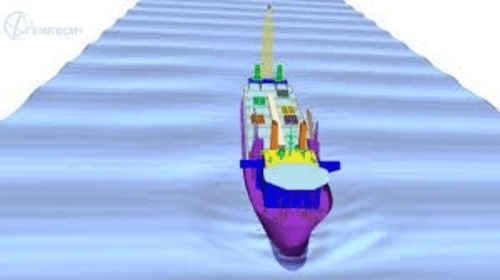
CFD Marine Boat in Head Waves Modeling Services
Modeling sailing in rough seas, requires to define complex models that simulate waves on the free surface using the VOF Wave physics model in Simcenter STAR-CCM+. To account for boat handling in such conditions, our workflow uses the six degrees of freedom solver with a free surface flow to model the motion and capture the associated forces and moments to steer a boat in waves successfully, including:
- Regular Waves
- Irregular Waves
- Current Effects
- Boat Launch
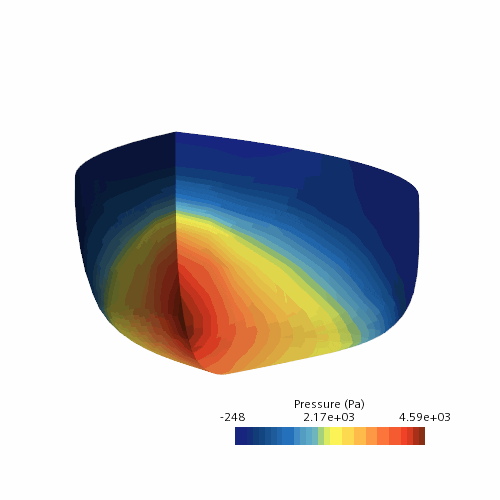
Outperform the competition by taking advantage of our extensive CFD experience today.
"*" indicates required fields
